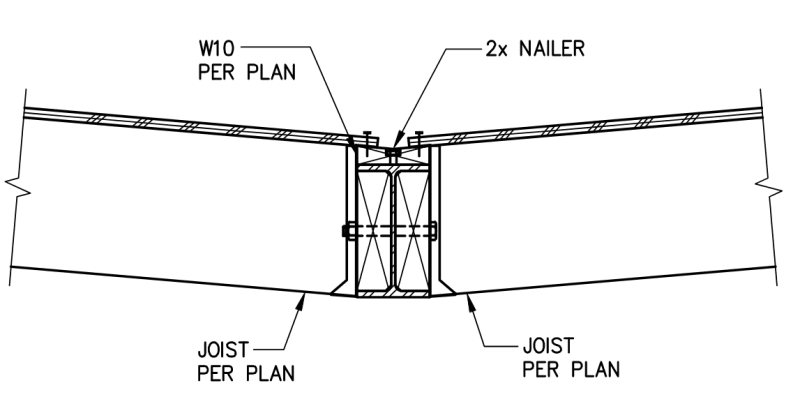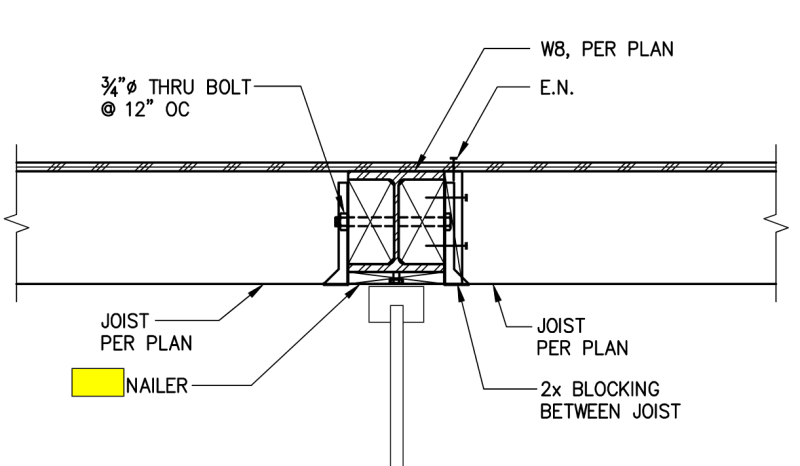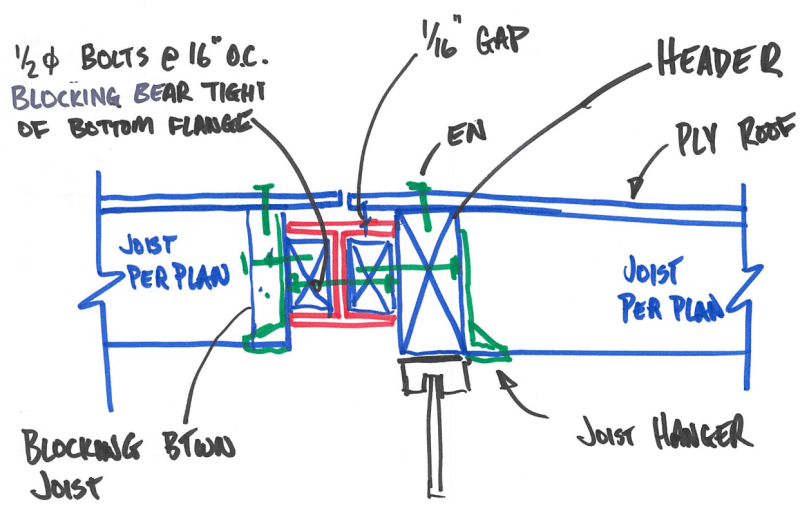m_struct
Structural
- Nov 11, 2020
- 64
For a residential job, architectural constrains are minimizing the nailer thickness on top of W10 gravity beam. Wood roof framing face mounted to blocking in web of W10. The roof ply fixes to the nailer, so any fixings would need to be recessed.

What is the thinnest that the nailer could be? Threaded Nelson stud – how much recess is required? Powder actuated Fastners?
What about OMF with W8 beam and the nailer fixed to the underside of the beam for the window fixing. Load from roof diaphragm coming in blocking on side of beam.


What is the thinnest that the nailer could be? Threaded Nelson stud – how much recess is required? Powder actuated Fastners?
What about OMF with W8 beam and the nailer fixed to the underside of the beam for the window fixing. Load from roof diaphragm coming in blocking on side of beam.


